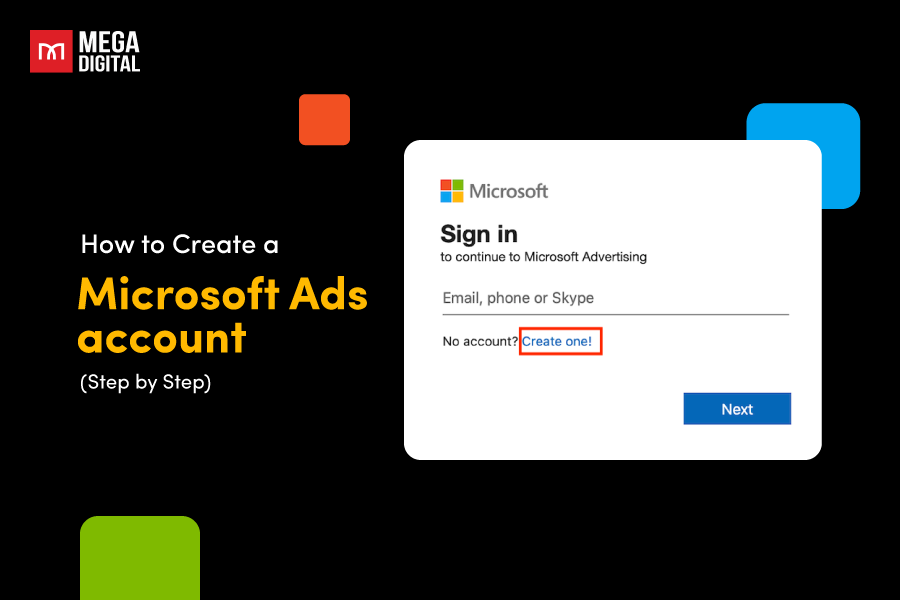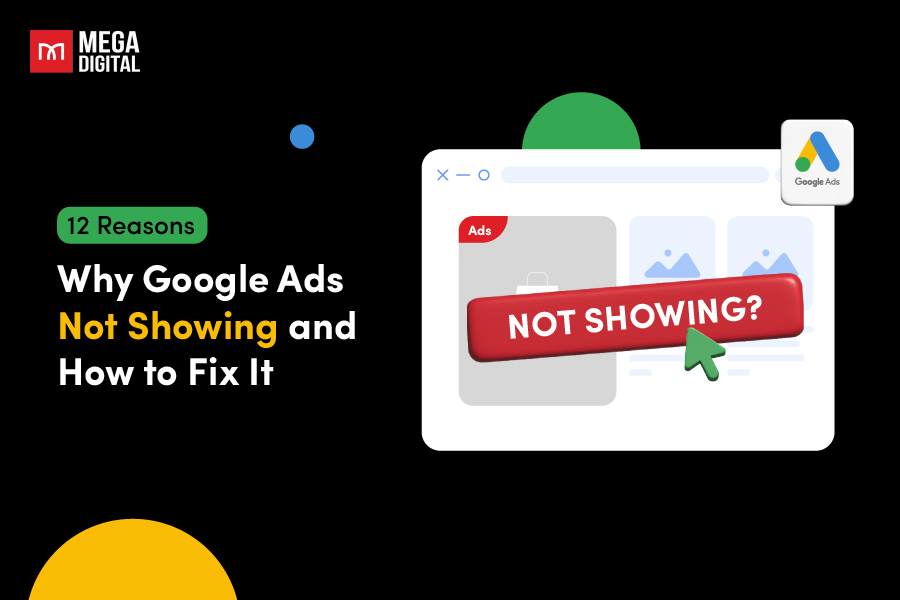If you’re looking to understand how to make money through online advertising, you’ve probably come across the term “search arbitrage.” This blog will explain what search arbitrage is, how it works, and how you can use it to generate profits.
QUICK SUMMARY
- Search arbitrage = buy low-cost traffic, send it to search feeds or monetized landing pages, earn from the difference.
- Success depends on finding cheap but quality traffic, building optimized landing pages, and complying with ad network rules.
- Key traffic sources include paid search ads, social media, native ads, display, and mobile ad networks.
- In this guide, you’ll learn how search arbitrage works step by step, which niches bring the most profit, and common mistakes to avoid.
What is Search Arbitrage?
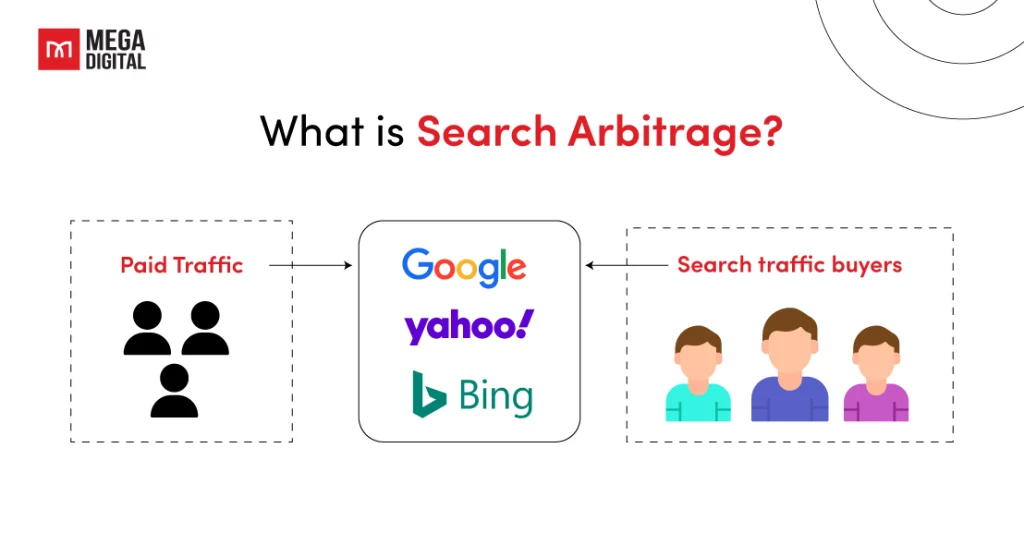
Search arbitrage is a digital marketing strategy that exploits differences in traffic costs to generate profit. The goal is to purchase low-cost traffic and then monetize it by directing users to search feeds or ad networks that yield higher revenue.
This strategy is often confused with traffic arbitrage, which involves buying cheap traffic and monetizing it through higher-paying ads or affiliate links without necessarily using search feeds.
How does Search Arbitrage Work?
Search arbitrage operates by acquiring web traffic at a lower cost and redirecting it to a platform where it can be monetized at a higher rate. Here is a detailed breakdown of how the search arbitrage process typically works:
1. Traffic Acquisition
The arbitrageur acquires traffic using various methods:
- Search Engines: By creating PPC campaigns targeting low-cost keywords on platforms like Google Ads or Bing Ads.
- Social Media: By using targeted ads on platforms like Facebook Ads and TikTok Ads, which focus on specific audience demographics instead of keywords.
- Content Discovery Networks: By promoting content through platforms like Taboola and Outbrain, which place ads on various websites to attract visitors.
The goal is to drive a substantial amount of traffic to a landing page at minimal cost.
2. Intermediate Landing Page with Search Feeds
The acquired traffic is directed to an intermediate landing page that integrates a search feed from a provider like System1 or Tonic. This page serves as a gateway and helps transform the paid traffic into organic-like traffic.
3. Final Landing Page Monetized with Google AdSense
Users who interact with the search feed results on the intermediate landing page are more likely to visit additional pages on your site. These final landing pages are optimized with ads from Google AdSense or other ad networks such as Media.net, PropellerAds, or similar platforms. Since the traffic is now interacting organically through the site, it complies with ad network policies.
4. Monetization
Revenue is generated through various models:
- Search Feed Interaction: While the primary goal is to guide users to the final landing pages, some revenue may be generated if the search feed provider offers CPC or CPM models. However, the main revenue typically comes from interactions on the final landing pages.
- Ad Network Interaction: The final landing pages earn revenue through various ad networks (e.g., Google AdSense, Media.net) when users click on ads or generate impressions.
- Profit Calculation: The key to successful search arbitrage is ensuring that the revenue from the clicks or impressions on the final landing pages exceeds the cost of acquiring the traffic. The difference between these two figures represents your profit.
Types of Traffic Usable in Search Arbitrage
In search arbitrage, the effectiveness of your strategy heavily depends on the types of traffic you acquire. Here are some of the most popular and effective traffic sources that can be used in search arbitrage, along with their advantages and disadvantages:
Paid Search Traffic
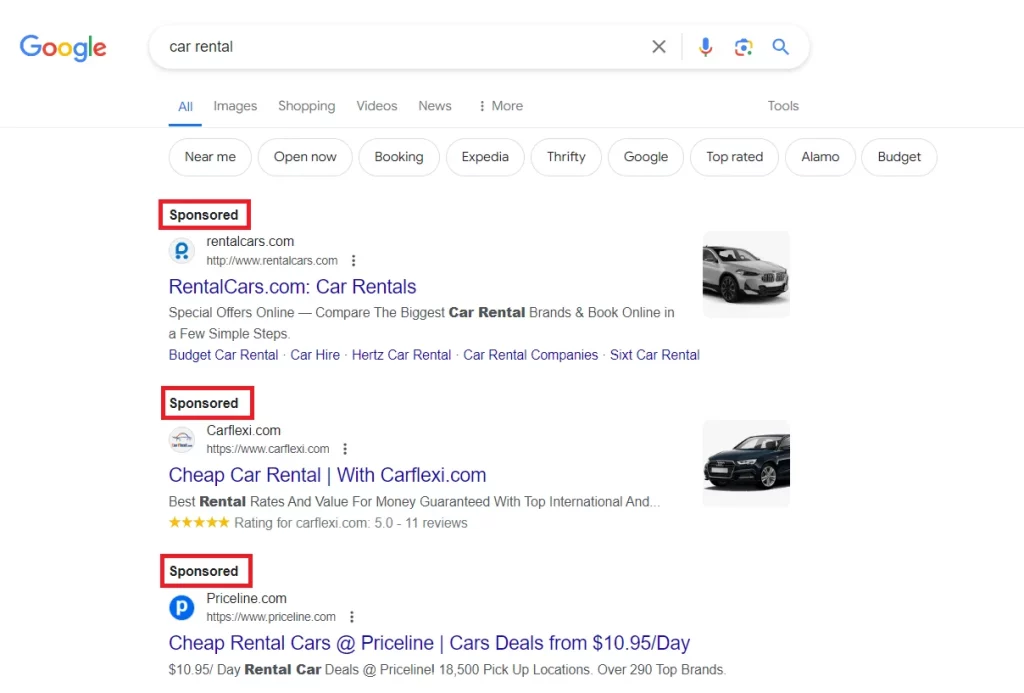
Paid search traffic is generated through pay-per-click (PPC) campaigns on search engines like Google Ads and Bing Ads. When you bid on specific keywords, your ads appear in the search engine results pages (SERPs) when users search for those keywords.
Advantages:
- High Intent: Users who arrive through search ads are often looking for specific information, products, or services, making them more likely to engage with your ads.
- Targeted: You can target specific keywords, demographics, and locations to reach your desired audience.
Disadvantages:
- Costly: Popular keywords can be expensive, leading to high costs if not managed properly.
- Competitive: High competition for popular keywords can drive up prices and make it difficult to achieve a positive ROI.
Social Media Traffic
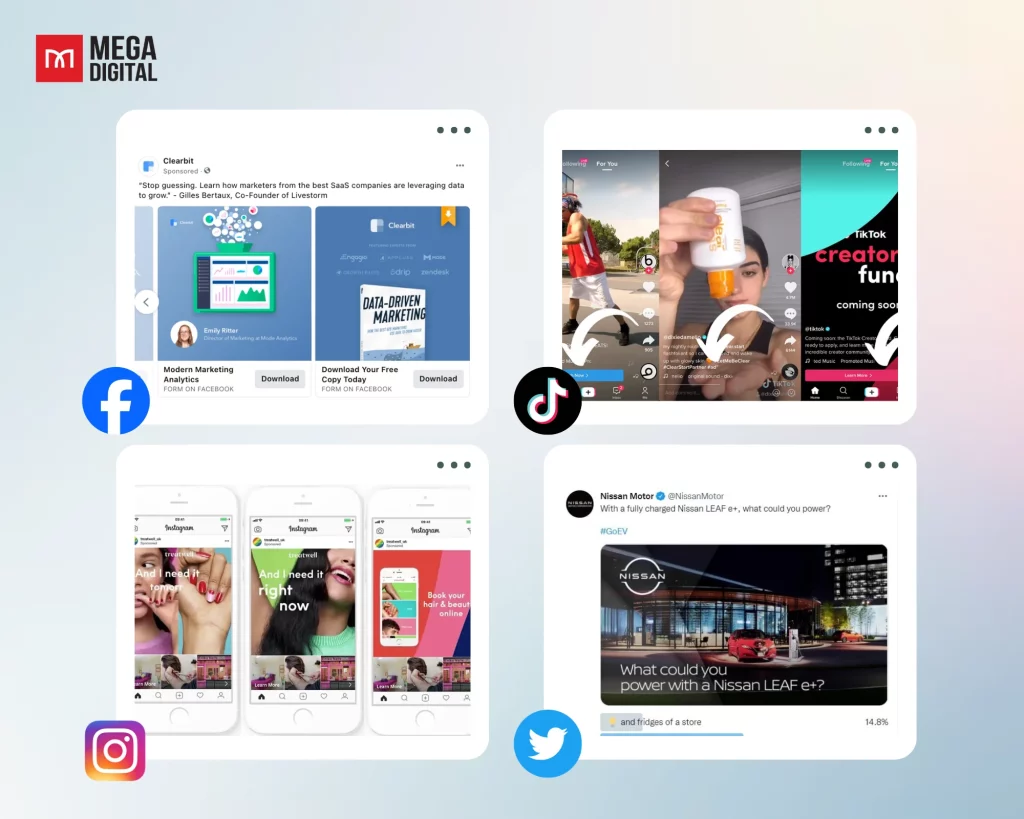
Social media traffic is generated through ads on platforms like Facebook, Instagram, TikTok, and LinkedIn. These platforms offer various ad formats, including display ads, video ads, and sponsored posts.
Advantages:
- Wide Reach: Social media platforms have vast user bases, allowing you to reach a broad audience.
- Targeting Options: Advanced targeting options based on demographics, interests, behaviors, and more.
Disadvantages:
- Ad Fatigue: Users can become desensitized to ads, leading to lower engagement over time.
- Variable Quality: Traffic quality can vary, with some clicks coming from users with low intent or interest in your content.
>>> Read more: Social to Search Arbitrage: What is it & How Can You Earn?
Native Ads
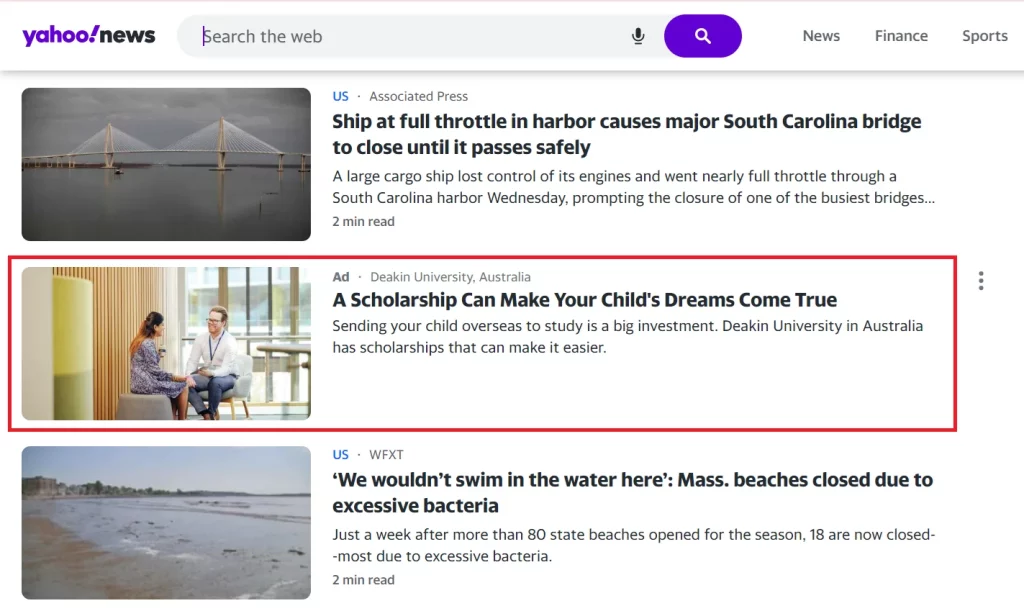
Native ads are integrated into the content of the host site and are often displayed as “recommended content” or “related articles” on high-traffic websites. This can be done with content discovery networks like Taboola and Outbrain.
Advantages:
- Native Advertising: Ads are closely related to the content of the host site, making them less intrusive and more appealing to users.
- Scalability: Content discovery networks can drive large volumes of traffic to your site.
Disadvantages:
- Lower Intent: Users may click on your ads out of curiosity rather than intent, leading to lower conversion rates.
- Relevance Issues: The context of the host site may not always align perfectly with your content, affecting user engagement.
>>> Read more: What is Native to Search Arbitrage? How to Gain Profit?
Display Ads
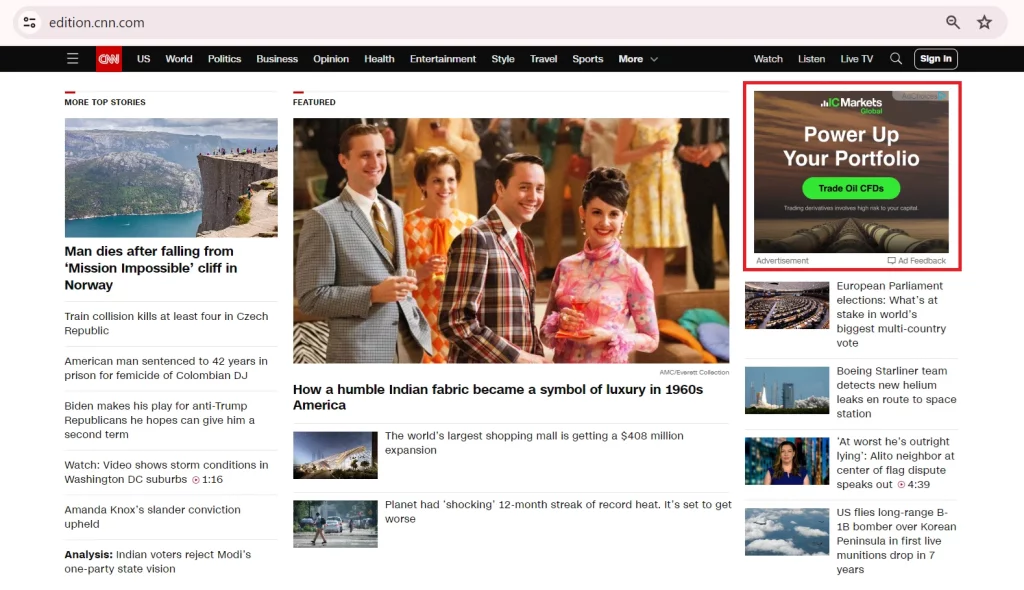
Display ads include banner ads, video ads, and other visual advertisements placed on websites that you see all the time. These can be acquired through networks like Google Display Network and other programmatic ad platforms.
Advantages:
- Visual Appeal: Display ads can be highly engaging if designed well, capturing user attention effectively.
- Brand Awareness: Due to the visual nature of the ads, they help in building your brand awareness.
Disadvantages:
- Banner Blindness: Users can become accustomed to ignoring display ads, leading to lower engagement rates.
- Ad Blockers: Increasing use of ad blockers can reduce the reach of display ads.
Mobile Ad Networks

Mobile ad networks provide monetization solutions for mobile apps, including various ad formats optimized for mobile users. Examples include Pangle, AdMob, and Unity Ads.
Advantages:
- Mobile-First: Your ads are optimized for mobile advertising, making them ideal for the mobile user experience.
- Integration with Apps: They enable seamless integration with mobile apps to enhance reach and engagement.
Disadvantages:
- Platform-Specific: Not all mobile ad networks operate the same. Some may be more beneficial within specific ecosystems, which potentially limits broader applicability.
- Quality Variance: The traffic quality can vary, impacting your overall engagement and conversion rates.
Search Feed Providers for Search Arbitrage
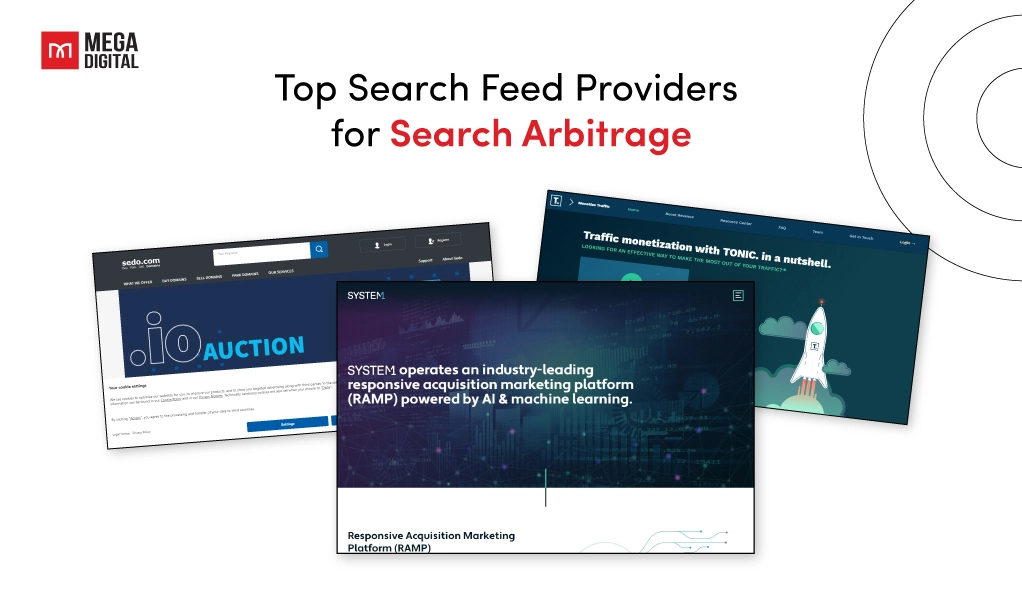
Search feed providers are companies offering services that allow websites to display search results or ads generated by their platforms. They deliver relevant content to users based on their queries or browsing behavior, helping website owners monetize their traffic.
In search arbitrage, website owners integrate the search feed provider’s code, or API, into their landing pages. Acquired traffic is directed to these pages, where users see search results or ads relevant to their queries or browsing behavior. The main goal is to guide users to final landing pages where the website owner can earn revenue through ads displayed by networks such as Google AdSense or Media.net.
Several companies offer search feed services that can be used in search arbitrage:
- Sedo: Known for domain parking and monetization, Sedo provides search feed services for displaying ads on parked domains.
- System1: Specializes in data-driven optimization and monetization, offering relevant ads through search feeds.
- Tonic: Offers various advertising solutions, including search feeds to help publishers monetize traffic.
Step-by-Step Guide to Do Search Arbitrage
After we have deeply understood all the parts of this puzzle, let’s get into how you can do search arbitrage on your own! In this section, besides step-by-step search arbitrage, I will also provide some tools and key takeaways to help you run your campaign smoothly.
Step 1: Identify Low-Cost Traffic Sources
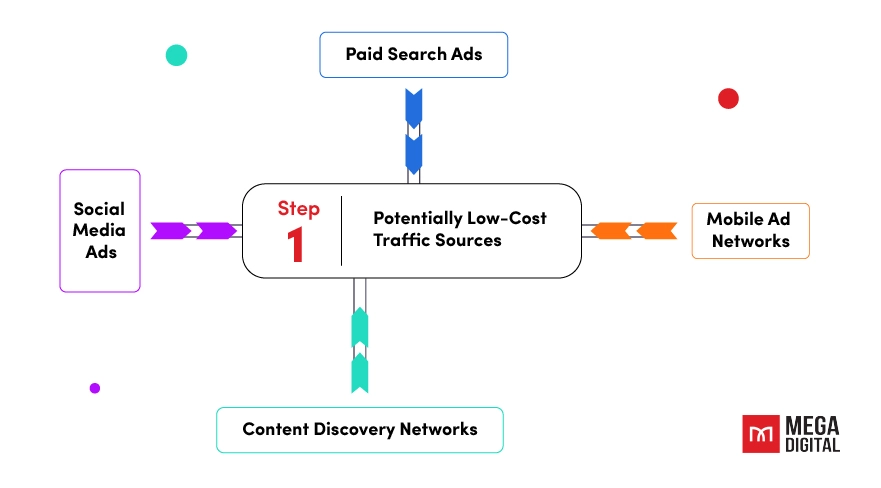
To start, you need to acquire traffic at a low cost. This is essential because your profit depends on the difference between the cost of acquiring traffic and the revenue generated. Here are some effective methods:
Paid Search Ads:
- Platforms like Google Ads or Bing Ads allow you to run PPC campaigns targeting low-cost keywords.
- Focus on long-tail keywords with lower competition to reduce costs.
- Use tools like Google’s Keyword Planner or Keyword Tool to find these keywords.
Key Takeaway: Proper keyword selection is crucial. High competition for popular keywords can drive up costs, reducing profitability.
Social Media Ads:
Social media platforms like Facebook, Instagram, and TikTok offer cost-effective advertising options.
- Utilize advanced targeting features to reach specific demographics or interest groups likely to engage with your content.
- Consider using tools like AdEspresso to optimize your social media ad campaigns.
Key Takeaway: Be aware of bot traffic on social media platforms, which can inflate engagement metrics without converting into real clicks.
Content Discovery Networks:
- Networks like Taboola and Outbrain promote your content across various websites.
- Optimize your headlines and images using tools like CoSchedule Headline Analyzer to improve click-through rates.
Key Takeaway: Ensure content relevance to reduce bounce rates and improve engagement.
Mobile Ad Networks:
- For mobile traffic, consider using mobile ad networks such as Pangle, AdMob, or Unity Ads.
- Use mobile-friendly and engaging ad creatives.
- Tools like Canva can help design visually appealing mobile ads.
Key Takeaway: Mobile optimization is essential for user engagement. You should focus on identifying low-cost, high-volume traffic sources while being vigilant about bot traffic. Plus, use advanced targeting and optimization tools to reach the right audience at the lowest cost.
Step 2: Create an Intermediate Landing Page
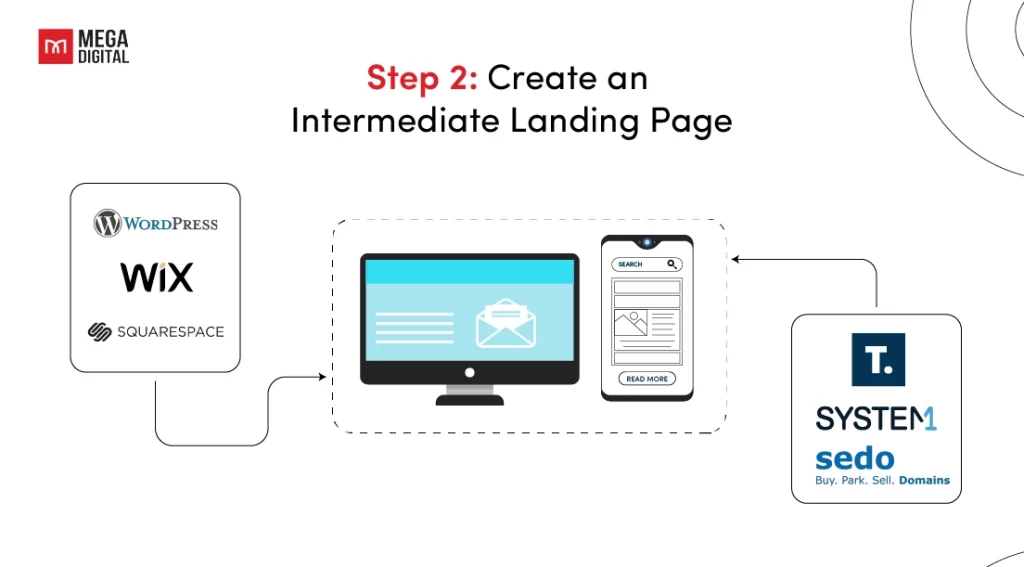
An intermediate landing page is crucial for converting the acquired traffic into ad engagements. This page serves as the first interaction point and should encourage users to engage with the ads or search results displayed.
Use a website builder or CMS to design the page. Some popular options include:
- WordPress: A highly customizable CMS with numerous plugins to enhance functionality. Use plugins like Elementor for easy drag-and-drop page building.
- Wix: An intuitive website builder with various templates and customization options.
- Squarespace: Known for its design-centric approach, making it ideal for visually appealing landing pages.
Integrate search feeds from providers like System1, Sedo, or Tonic by embedding their code or API to display relevant search results or ads. Ensure the page design encourages user interaction with these search feed results, as higher engagement leads to more clicks and increased revenue. A/B testing different layouts and call-to-action buttons using tools like Optimizely can help maximize engagement rates.
Note: Make sure your landing page loads quickly and is mobile-friendly. Slow loading times can lead to high bounce rates and reduced engagement.
Step 3: Drive Traffic to the Intermediate Landing Page
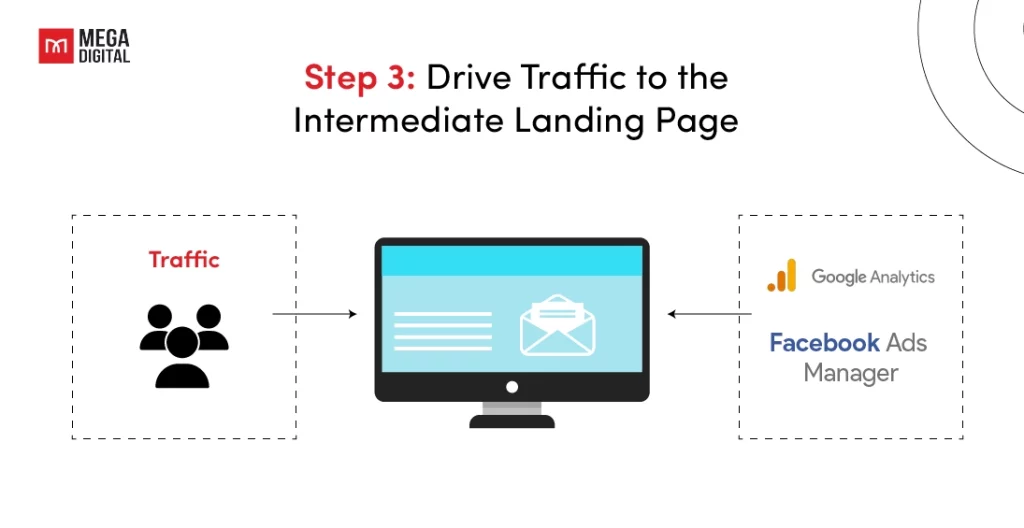
Once your intermediate landing page is set up, direct the acquired low-cost traffic to it. Set up and launch advertising campaigns on your chosen platforms. Use performance metrics such as click-through rate (CTR) and cost per click (CPC) to gauge effectiveness. Then, refine targeting parameters based on performance data to improve traffic quality and engagement rates. Tools like Google Analytics and Facebook Ads Manager help you gain valuable insights for monitoring and optimizing your campaigns.
Key Takeaway: Continuously monitor and adjust your campaigns based on performance data to ensure you are targeting the most effective audience segments.
Step 4: Redirect Traffic to Final Landing Pages
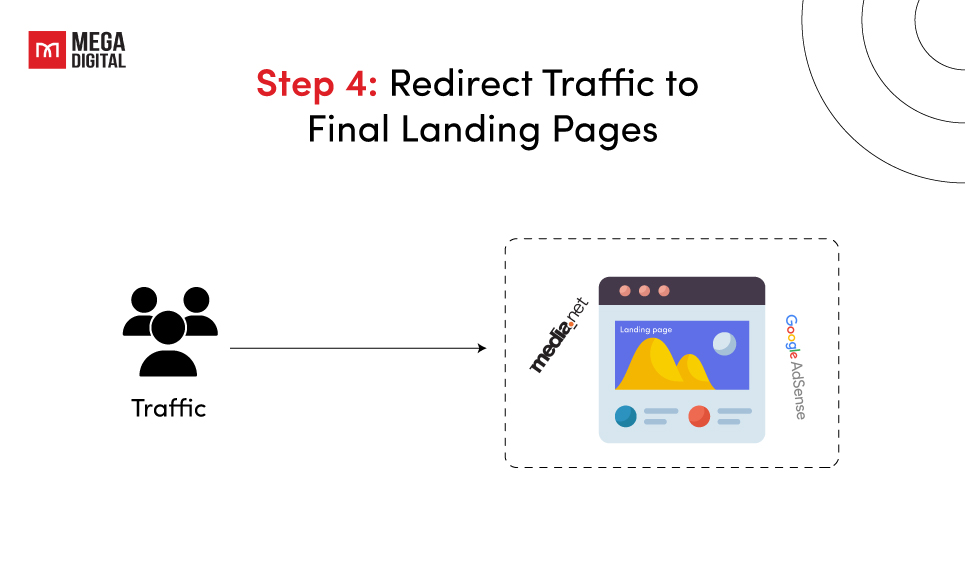
Monetize the traffic on the final landing pages with high-value ads. Create or optimize landing pages monetized by ad networks like Google AdSense or Media.net. You need to ensure these pages comply with ad network policies to avoid penalties. Use analytics tools to track user behavior and conversions, helping measure the success of your monetization efforts and identify areas for improvement. Tools like Hotjar can provide insights into user behavior on your landing pages.
Note: Compliance with ad network policies is crucial. Violations can lead to penalties or account suspension.
Step 5: Monitor and Optimize
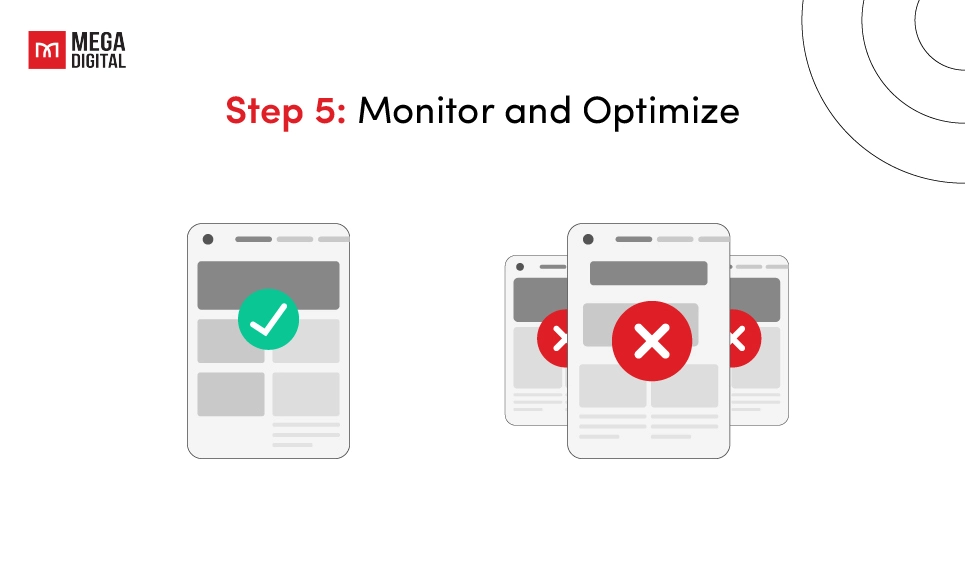
Continuous monitoring and optimization are key to maintaining and improving your strategy’s effectiveness. It is important to regularly review performance data to understand what works and what doesn’t. Next, adjust your campaigns based on metrics to ensure the best return on investment (ROI). Finally, conduct A/B tests on different versions of your landing pages and ads to identify the most effective combinations.
Key Takeaway: Optimization is an ongoing process. Regularly testing and tweaking your strategies will help you maintain and improve performance over time.
Step 6: Scale Your Efforts
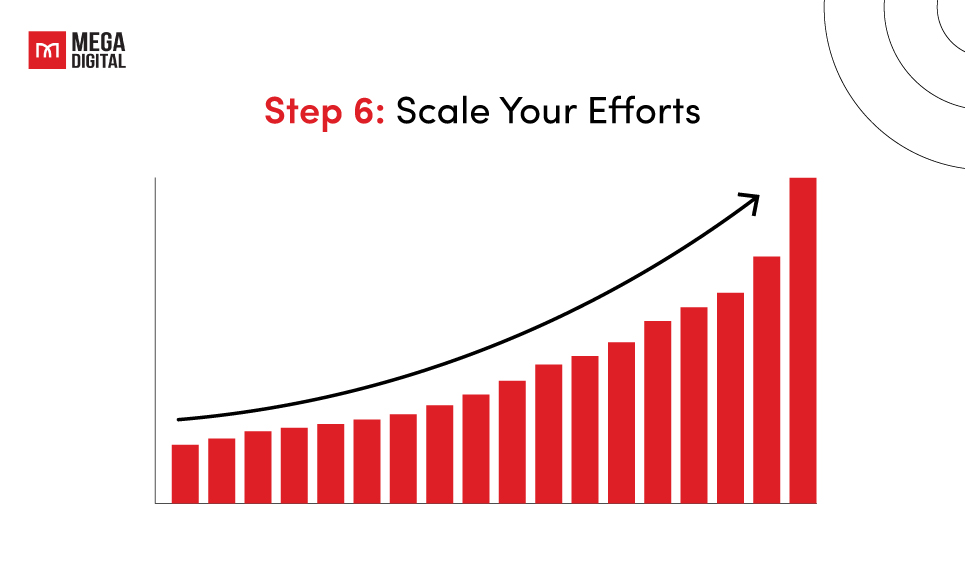
Once your strategy is proven effective, scaling helps increase revenue. Gradually increase your advertising budget for successful campaigns. Expand your keyword list and explore additional traffic sources to broaden your reach and diversify traffic. Utilize automation tools like Zapier to manage parts of your workflow, saving time and ensuring consistent performance.
Note: Scaling should be gradual. Rapid scaling without proper monitoring can lead to inefficiencies and increased costs.
Best Ad Topics for Arbitrageurs
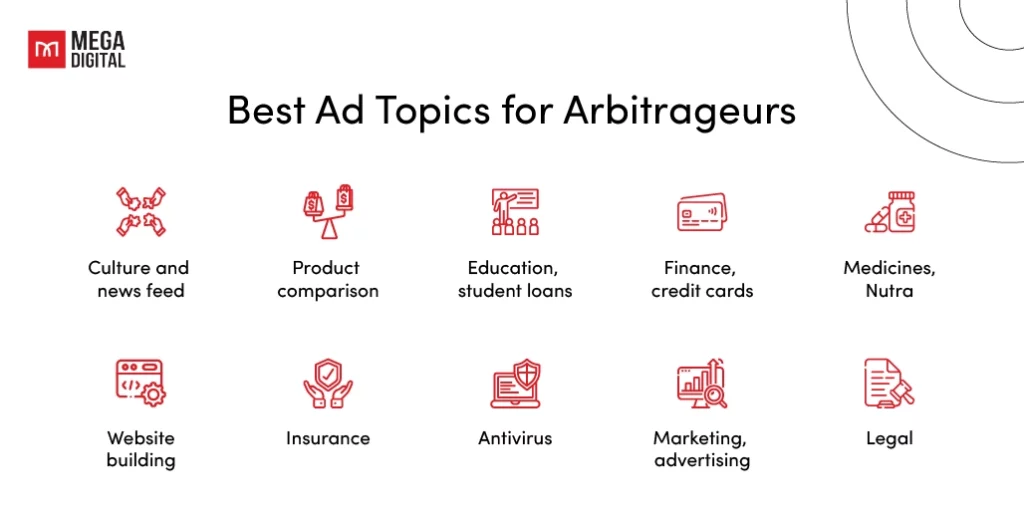
Similar to the broader affiliate marketing sector, certain profitable advertising niches stand out for arbitrageurs to consider when launching a new campaign. While these topics may be perennial favorites, simply hopping on the trend won’t ensure success. Continuous optimization and strategic planning are still essential for conversions.
It is important to emphasize that these suggestions are simply recommendations. For the most current insights, it’s advisable to connect with the experts at Mega Digital. Each campaign is unique and should be approached on a case-by-case basis with customized consultation.
FAQs about Search Arbitrage
Yes, search arbitrage is legal. However, it’s crucial to comply with the terms and conditions of the advertising networks you use, such as Google AdSense, and ensure you are not engaging in deceptive practices. Always follow the guidelines provided by the ad networks to avoid penalties or account suspensions.
Search arbitrage can be profitable if executed correctly. Your profitability depends on your ability to acquire low-cost traffic and effectively monetize it through higher-paying ads. Key factors include the quality of your traffic, the relevance and engagement of your landing pages, and the continuous optimization of your campaigns. Many marketers have successfully used search arbitrage to generate significant revenue, but it requires careful planning and execution.
Search arbitrage monetization offers the potential for profitability but comes with several risks that need careful management. These risks include policy violations, traffic quality issues, keyword competition, thin profit margins, algorithm changes, ad blocking, compliance issues, market saturation, user experience concerns, and financial risks.
To minimize these risks, it’s crucial to comply with policies and regulations, focus on quality traffic, conduct A/B testing, implement robust monitoring and analytics, and continuously optimize your campaign.
The time it takes to see results from search arbitrage can vary based on several factors, including the competitiveness of your chosen keywords, the quality of your traffic, and the effectiveness of your landing pages. Typically, you can start seeing initial results within a few weeks, but significant, consistent profits may take several months of optimization and scaling.
Common mistakes in search arbitrage include:
– Neglecting Compliance: Ignoring ad network policies can result in penalties.
– Ignoring Traffic Quality: Failing to monitor and filter out low-quality or bot traffic can waste your budget.
– Overlooking Optimization: Not regularly testing and optimizing your landing pages and ads can lead to suboptimal performance.
– Scaling Too Quickly: Rapidly increasing your budget without proper monitoring can lead to inefficiencies and increased costs.
The key factor is traffic input, since CPC costs can fluctuate unpredictably with market changes. While landing pages and optimization are within your control, traffic pricing is not. To stay profitable, you need up-to-date market insights and keyword strategies. If you’re just starting out or working with a limited budget, using an ad account rental service can help you access real-time data and keep CPC costs lower.
Traffic arbitrage covers many traffic types (social, display, native) and monetizes through ads or affiliate offers. Search arbitrage is more specific — it relies on search feeds and keyword-driven flows, monetizing directly from user search intent.
1-Click Flow: Ad → Search results page. Fast but requires precise targeting.
2-Click Flow: Ad → Pre-lander → Search results page. Adds a filter step, often improving conversion rates.
>>> Read more: Ad Arbitrage 2026 Guide: The Art of Monetizing Ad Traffic
Final Words
Search arbitrage offers the potential for significant profits by acquiring low-cost traffic and redirecting it to monetized landing pages. The success of this strategy depends on effectively managing various factors, such as traffic quality, landing page optimization, and continuous campaign monitoring and adjustments.
Staying adaptable and informed about market changes, leveraging the right tools for keyword research and ad management, and considering partnerships with experienced agencies can enhance your chances of success. By carefully planning and executing your strategy, you can navigate the complexities of search arbitrage and achieve substantial returns on your investment.









